White Grapes
| White Grapes | Origin |
| Chardonnay | Bourgogne France |
| Sauvignon Blanc | Loire France |
| Riesling | Mosel/Rhein Germany |
| Pinot Grigio | North East Italy |
| Pinot Blanc | Bourgogne France |
Chardonnay
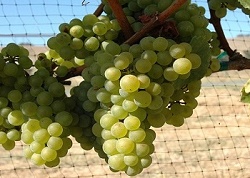
Chardonnay is the most popular white wine grape in the world and the name comes from a village in South Burgundy.
Chardonnay is a grape with a limited (not very aromatic) taste. It produces neutral wines that need help to become interesting.
This can be done in several ways. One common way is to ferment or store the wine in oak barrels.
Chardonnay also easily absorbs the taste of the soil (terroir), and this is consciously used to complement Chardonnay's taste profile in Europe.
Quality Chardonnay wines always have a round character, a great length, and a rich after-taste, but Chardonnay shows a multitude of styles all over the world, from totally uninteresting, strong alcoholic wines with artificial fruit aromas, to the world's most sublime, perfect balanced wines.
In cool climates, Chardonnay can have a light body with noticeable acidity and flavors of citrus, green apple, and pear.
In warmer locations the flavors are more yellow apple, peach, melon, and tropical fruit such as pinapple.
Typical Flavors:
Citrus |
Apple |
Peach |
Pineapple |
Oak Added Flavors:
Vanilla |
Butter |
Toast |
Hazelnuts |
Sauvignon Blanc
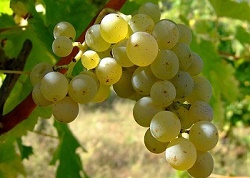
Sauvignon Blanc is one of the most popular grapes in the world.
It originates from Bordeaux and/or the Loire Valley in France. The name means "Wild White".
Sauvignon Blanc is very aromatic. It is known for high fruit and green herbal aromas.
Depending on climate and terroir, the primary aromas can change from grassy to tropical.
Less ripe grapes (cold regions) produce lime, grapefruit, apple, and gooseberry flavors, together with herb qualities like fresh-cut grass, black current leaves, and green pepper.
Ripe grapes (warm regions) add tropical fruit aromas like melon, peach, passion fruit, and lychee.
However, the herbal green character is a common denominator wherever it is grown.
Apple |
Grapefruit |
Peach |
Passion |
Gooseberry |
Cut Grass |
Green Pepper |
Asparagus |
Riesling
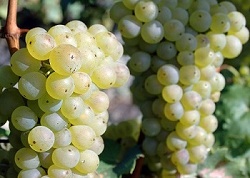
The Riesling grape is super aromatic.
It displays strong flowers, citrus and tree-fruit notes (green to yellow apples) and high acidity.
Warmer climates can add more peach and orange notes.
Riesling produces dry, semi-dry, sweet, sparkling, and dessert wines.
Dry Riesling is primarily a food wine. Alone, the wines may seem a bit acidic.
Citrus, Apple, and white Fruit flavors are typical for Riesling, with hints of Flowers, Herbs, and Steely Minerals:
Apple |
Lemon |
Nectarine |
Flowers |
Pinot Grigio
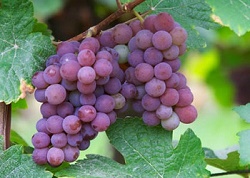
Pinot Grigio originates from Burgundy (Pinot Gris), but its most famous expressions come from Italy and in Alsace (France).
It also grows in Germany and Austria under the name of Grauburgunder.
The Italians prefer their Pinot Grigio fresh and light. Therefore, they harvest the grape earlier than is common in Alsace.
Two distinctive style differences occur: fresh and light Italian Pinot Grigio, and rich and powerfull Pinot Gris.
To retain the fruity and citrusy aromas, Pinot Grigio is fermented in Steel Tanks (not in oak).
Crispy Lemon, Apple, and Pear flavors are typical for Pinot Grigio, with hints of Minerals:
Lemon |
Apple |
Pear |
Flint |
Pinot Blanc
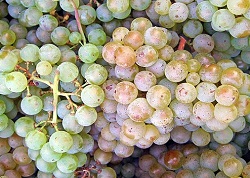
Pinot Blanc is produced under different names in various European wine regions.
- Pinot Blanc - France
- Pinot Bianco - Italy
- Weisburgunder - Germany/Austria
The grape is used to produce full bodied wines, light dry wines, sparkling wines, and dessert wines.
Citrus and Green Fruit flavors are typical for Pinot Blanc, with hints of Nuts, and Minerals.
Lime |
Apple |
Pear |
Almonds |